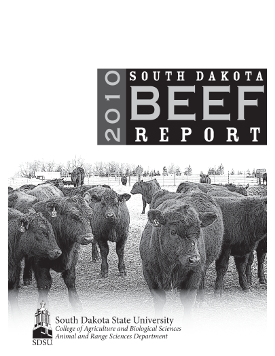Document Type
Report
Report Number
2010-3
Publication Date
2010
Summary
A novel germ fraction is being generated by the BFrac™4 process. The 20% fat, dry, flowable material is a potential source of concentrated energy to include in Northern Plains feedlot diets. A metabolism study with wethers was conducted to evaluate how ruminants would respond to this additional fat intake in finishing diets. Total collections of urine and feces were conducted on 23 wethers fed pelleted, high‐corn content, iso‐nitrogenous diets that included 0, 10, 20, or 30% germ. Each 6‐d collection period followed 21 d adaptation periods. Increasing BFrac™ germ content caused (P < 0.01) an increase in DMI and a linear (P < 0.001) decrease in DM digestibility, probably due to the effect of DMI. There was a quadratic (P < 0.01) increase in EE digestibility, plateauing at 10% germ. Dietary DE, kcal/g declined linearly (P < 0.01) but DE intake (kcal/d) increased linearly (P < 0.05) because of higher DMI. There was no (P > 0.15) dietary effect on N digestibility, but there was a linear (P < 0.01) reduction in N retained. The increase in DE intake and decrease in N balance suggest that diets containing 20% or 30% germ had an antagonistic impact on metabolism.
Number of Pages
3
Format
application/pdf
Language
en
Publisher
South Dakota State University
Rights
Copyright © 2010 South Dakota State University.
Recommended Citation
Pritchard, R.H. and Kleinhans, G.B., "Digestion and Metabolism of Diets Containing Increasing Levels of Corn Germ" (2010). South Dakota Beef Report, 2010. 4.
https://openprairie.sdstate.edu/sd_beefreport_2010/4

